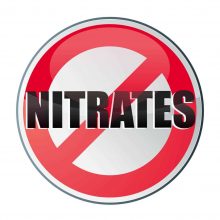Nitrates
How Do Nitrates and Nitrites Get into Groundwater?
Nitrates and nitrites can enter groundwater by combining with both organic and inorganic materials. Most commonly found in well, nitrates enter through a variety of sources, including agricultural runoff of fertilizers, septic systems, naturally occurring animal waste, and sewage treatment plants.
How Do I Know if the Nitrate Level of My Water is Too High?
It is difficult for the homeowner to make this judgment call because nitrates are tasteless, colorless, and odorless. The only way to know is if you have your water tested by a professional.
Can High Levels of Nitrates in Water Be Reduced?
Nitrate can be reduced through reverse osmosis and ion exchange methods that are commonly used to remove contaminants from water. Both processes involve the use of a membrane or a solid material to filter out impurities, making them effective at removing a wide range of contaminants, including nitrates, nitrites, heavy metals, and pathogens.
If you are currently experiencing a nitrate problem and you are nervous about your drinking water, you can temporarily drink store-bought bottled water for drinking or cooking until you have a water consultant install your water treatment system.
EcoWater Reverse Osmosis >>
Want to Know Your Nitrate Levels?


